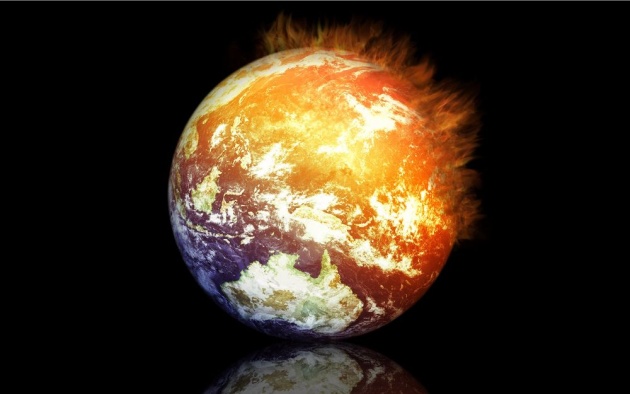GLOBAL WARMING
OUTLINE:
What Is Global Warming?
Indicators of Global Warming
Climate History Of The Earth
Present Scenario Of Global Warming
Causes Of Global Warming
• Burning Of Coal
• Appetite For Globally sourced goods
• Release Of Methane
• Use Of Forests For Fuel
• Use Of Chemical Fertilizers
Effects Of Global Warming
• Increase In Sea Levels
• Hurricanes And Cyclones
• Shortages Of Food And Water
• Extinction Of Species
• Coral Reefs Will Collapse
• More Diseases
Steps Taken By The World Community
• Earth Summit
• Copenhagen Conference
• Kyoto Protocol
• UN Environmental Program
• Asian Development Bank Program
Suggestions
Conclusion
ESSAY:
“The Earth is a generous mother, she will provide in plentiful abundance food for all her children if they will but cultivate her soil in justice and in peace.”
-Bourke Coekran
Global warming refers to the sustained increase in the average temperature of the earth’s atmosphere. In simple words, the phenomenon of warming of the planet Earth is known as global warming.
The chief indicators of the global warming are as under:
• Ozone Depletion
• Greenhouse effect
• Burning of Fossil fuels like coal, oil and natural gas which release greenhouse gases in the atmosphere.
• Rapid industrialisation
• Motor vehicle exhaust
The climate history of the earth has always fluctuated. There have been Ice Ages as well as the periods of great warmth, like when dinosaurs roamed the planet. So why is everyone concerned about the climate change now? Firstly, this changing climate is man-made. Secondly, the rate and speed at which the climate is changing has never occurred before. The climate used to change over a period of thousands of years. Scientists generally agree that the Earth’s surface has warmed by about 1 degree Fahrenheit in the past 140 years. A recent report predicts that the global temperature could rise between 1 degree Celsius and 6 degree Celsius by the ends of this century. That is some serious warming.
One of the biggest issues we are facing now is global warming. Its effects on animals on animals and on agriculture are needed frightening. The effects on the human population are even scarier. The facts about global warming are often debated. But unfortunately, even if we disagree about the causes, global warming effects are real, global and measurable. Let’s first discuss the causes of global warming and then its effects on the globe.
Our ever increasing addiction to electricity from coal burning power plants release enormous amounts of CO2 into the atmosphere. 40% of US CO2 emissions come from electricity production. Burning of coal accounts for 93% of emissions from the electric utility industry. Every day, more electric gadgets flood the markets. Without widespread alternative energy sources, we are highly dependent on burning coal for our personal and commercial electrical supply.
Our modern car culture and appetite for globally sourced goods is responsible for about 33% of emissions. With our population growing at an alarming rate, the demand for more cars and consumer goods is increasing. It means that we are increasing the use of fossil fuels for transportation and manufacturing. Our consumption is outpacing our discoveries of ways to mitigate the effects. There is no end in sight to our massive consumer culture.
Methane is another extremely potent greenhouse gas. When organic matter is broken down by bacteria under oxygen-starved conditions (anaerobic decomposition) as in rice paddies, methane is produced. The process also takes place in the intestine of herbivorous animals. With the increase in the amount of concentrated livestock production, the level of methane released into the atmosphere is increasing.
The use of forests for fuel, both wood and for charcoal is another major cause of global warming. Our appetite for wood and paper products contributes to the mass deforestation. Forests remove CO2 from the atmosphere and store it. But this deforestation is causing the release of large amounts of carbon dioxide in the atmosphere and the warming of the Earth.
In the last half of the 20th century, the use of chemical fertilizers has risen dramatically. The high rate of application of nitrogen-rich fertilizers has effects on the heat storage of cropland. Nitrogen oxides have 300 times more heat-trapping capacity per unit of volume than CO2. In addition to this, high nitrate levels in groundwater due to over-fertilization are the cause for concern for human health.
The effects of global warming are:
Scientists predict an increase in sea levels worldwide due to the melting of two massive ice sheets in Antarctic and Greenland, especially on the East Coast of the US. However, many nations around the world will experience the effects of rising sea-levels, which could displace millions.
The security of storms such as hurricanes and cyclones is increasing. Scientists have come up with the foremost evidence so far that global warming will significantly increase in the intensity of the most extreme storms worldwide.
According to recent research, there is a 90% chance that 3 billion people worldwide will have to choose between moving their families to milder climates and going hungry due to climate change within 100 years. Climate change is expected to have the most severe impact on water supplies. Shortage in future is likely to threaten food production, reduce sanitation, and hinder economic development and damage ecosystems.
Rising temperatures could lead to the extinction of more than a million species. And because we can’t exist without a diverse population of species on Earth, this is scary news for humans.
A report on coral reefs from WWF says that in a worst case scenario, coral populations will collapse by 2100 due to increased temperatures and ocean acidification. The bleaching of corals from small but prolonged rises in sea temperature is a severe danger for ocean ecosystems. It is because many other species in the oceans rely on coral reefs for their survival.
The most direct effect of climate change would be on health. Global warming could mean more cardiovascular diseases, lung diseases, high mortality due to increased heat etc. global warming in expected to expand the favourable zone for vectors carrying infectious diseases such as dengue fever. It could also lead to insect-borne disease in Britain and Europe.
The world community has become fully aware of the hazardous effects of pollution, CFCs, greenhouse gases and global warming. Many steps have been taken and more steps are to be taken to combat pollution and the release of greenhouse gases in the atmosphere in order to reduce the risks caused by global warming. Following are some major steps taken by the world community for combating the problems of global warming.
The Earth Summit was held at Rio-de-Janario, Brazil in 1992. It was sponsored by United Nations Organization. The focal point of this summit was to combat pollution and global warming. It was attended by almost head of every state. This summit took some concrete steps but the USA opposed it.
The Earth summit was followed by Copenhagen Conference, held at Denmark. This conference discussed the issue of global warming and took some steps to reduce the emission of CFCs in the atmosphere.
Kyoto Protocol is the name given to the decisions taken by the meeting of the representatives of several countries regarding global warming and CFCs. It was held at Kyoto, Japan and produced an agreement, known as Kyoto Protocol. Following decisions were taken:
• The industrialized countries should reduce their emission of CFCs by 2012 to an average of 5% below 1990 levels.
• The industries that release excessive CO2 must be stopped.
• The release of CFCs must be minimised and all appliances and industries that cause to release CFCs must be banned.
Besides these steps UN has also started UN Environmental Program and Asian Development Bank has also taken some steps for controlling global warming.
Our climate is changing: fresh water reserves, fish stocks, forests are shrinking, fertile land is being destroyed and many species are becoming extinct. In order to prevent the worse consequences and to continue to thrive on this planet, there is dire need to balance our population with available resources as well as to reduce our consumption of goods, energy and other resources. This applies not only to the rich countries, but also the rich people living in poor countries. Our habit of constant consumption is ultimately going to cost us more than we can pay for. We must transform the way we produce and consume products and services. We must start taking actions now. Here are some suggestions/solutions:
• Investing in renewable energy (wind solar)
• Plant more trees.
• Build more cool cities projects.
• Save electricity and power
• Use public transportation
• Eat more organically grown food.
• Recycle material
• Re-think
To conclude, as far as the facts tell us, we have lavishly used the natural resources of our planet. Now, we need to stop before the complete destruction of natural resources. We must take necessary measures not only on individual, but also at large international levels. But the fact remains that we are all responsible for making a difference individually. We all eat, drink, throw out wastes and burn out natural resources on individual basis everyday an everywhere of our lives. So, why not take responsibility to save the planet individually as well.
It is a good thing that the governments and large international organizations have heard the alarming bell. Laws are being formed and enforced for large organizations to refrain from polluting environment. Bans are being imposed on cutting more trees than required. But measures have to be taken on individual basis as well as to send message loud and clear. Save the planet for present and future generation. Do not wait for miracle. We are the ones who will work the miracle. The planet itself is a miracle. Let’s marvel at its beauty and preserve it.



